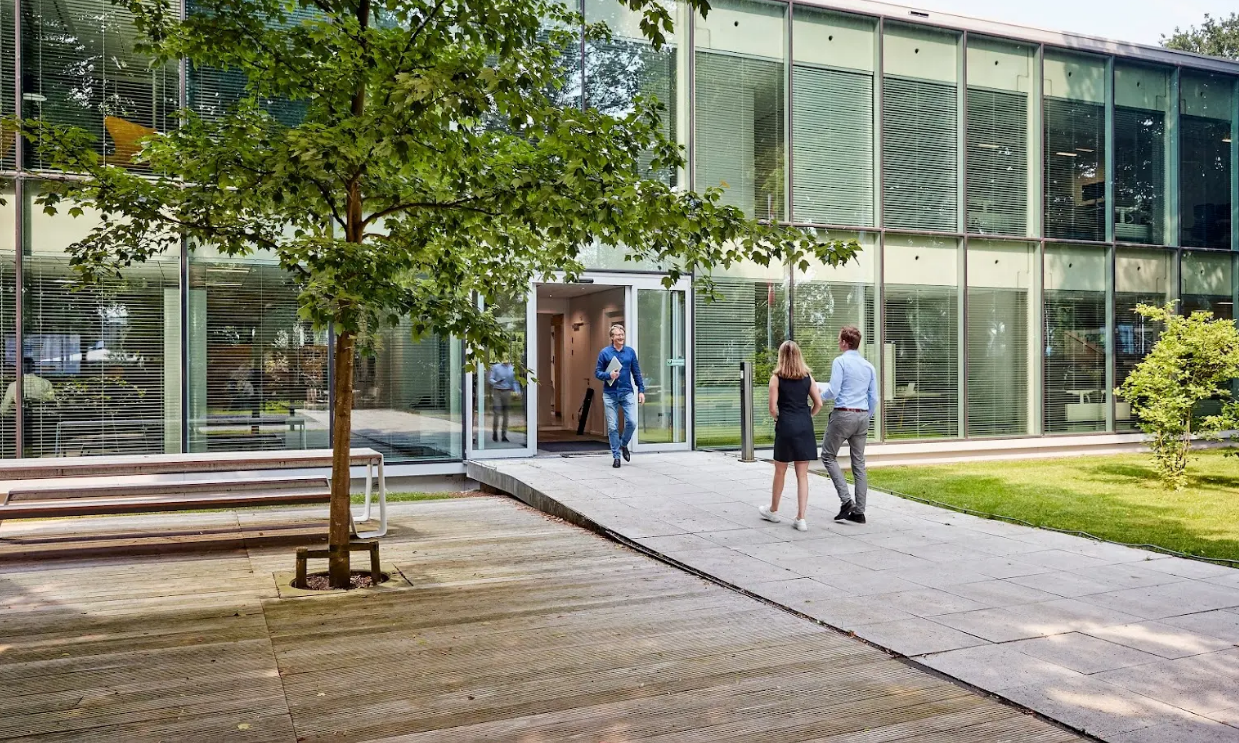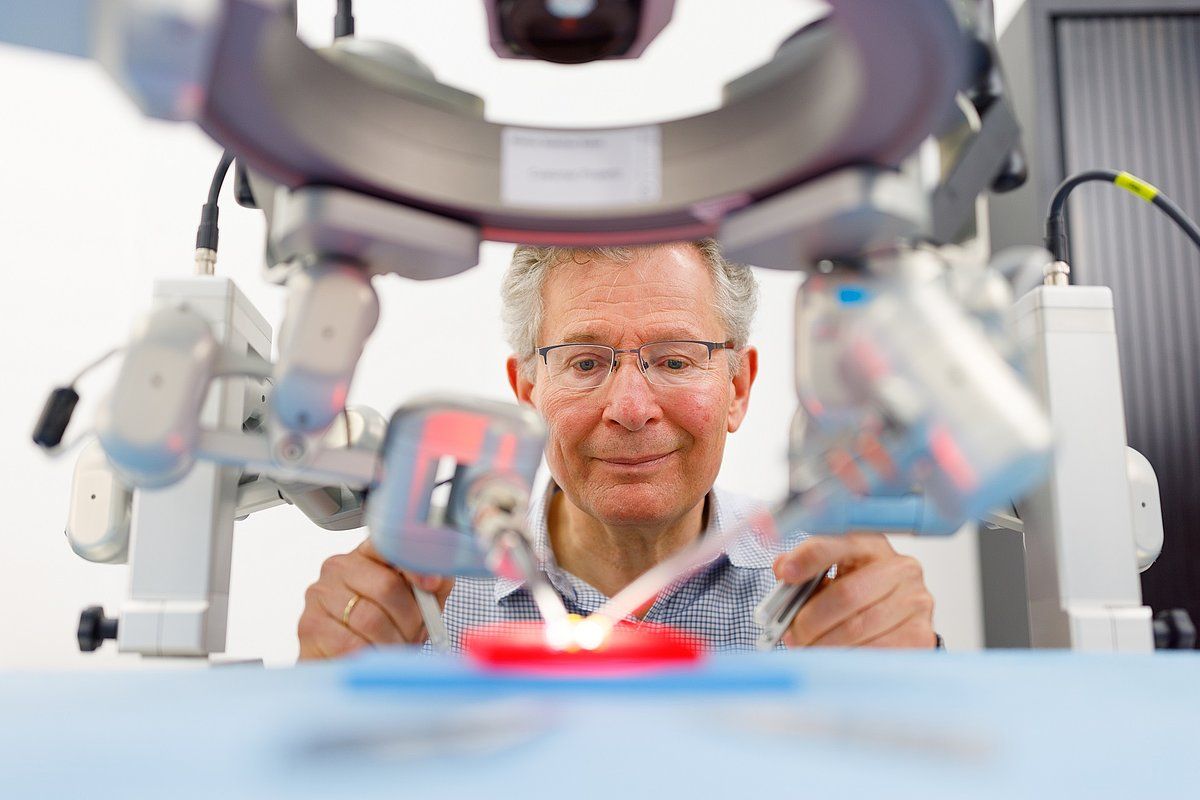
“Medical robotics is a relatively young market with enormous potential for improving the level of quality, driving down costs and operating in places that are almost inaccessible to doctors. Yet there are a lot of initiatives that just don’t pan out,” says Hulsbergen. He is venture developer for medical technology at the Brabant Development Agency (BOM).
Application of technology
Many start-ups in the field of medical robotics do not succeed in bringing their systems to the market because they have to circumvent other people’s patents, are overtaken by (foreign) competitors or because their product ultimately proves too expensive or ill-suited to the intended purpose. “On top of that, it costs a tremendous amount of money to develop a robot. If you discover during the journey that the application is not any good, then it is very difficult to switch things around. So, you have to determine at the very beginning of the process: how can I convert my technology into a manageable product that fits in with the routine of doctors, and where is there a great demand that is not currently being met?” explains Hulsbergen.

That’s why Hulsbergen works with start-ups to see which application best suits the technology that they have. And where the start-up can secure a position within the regulated healthcare system so that its product can be used and paid for on a large scale. “We have often seen start-ups supplement the business model of their technical product with a service model as a condition for being successful at any rate.”
ECG patch
Take start-up Glanum Medical as an example: initially, they wanted to offer a solution for patients who are unnecessarily referred to a cardiologist when cardiac arrhythmia is suspected. They developed an ECG patch that allows patients to be monitored for 96 hours, enabling GPs to make much more accurate referrals. “These days, the company is called Glanum Diagnostics and the medical plaster they came up with is only part of the story. It was during brainstorming sessions at BOM that the penny dropped, as in, this will only work if the GP is completely spared any concerns. Since then, everything at Glanum has revolved around the development of a first-line virtual diagnostic center and the only thing the GP needs to do is to stick the plaster on.”

‘Brainport speaks the same language’
Hulsbergen finds that the MedTech value chain in the Netherlands (“particularly in Brabant”) is extremely good. “Companies can work here in a very efficient way, simply because we are used to working together extensively here. Moreover, thanks to the TU/e and companies like Philips and ASML, it feels like everyone in the Brainport region speaks the same language and works in technology. That is unique. Also not insignificant: there is plenty of green in our region and it is not too difficult to pay and accommodate talented people. Just try to find an apartment in Sillicon Valley, it can’t be done.”
Investment climate
As such, there are plenty of advantages. But – as interviews with other MedTech pioneers have highlighted – Hulsbergen also sees the investment climate as a hindrance. “I just mentioned it: building robots is expensive. Many start-ups get bogged down in the initial phase, but also in subsequent financing rounds, which often involve tens of millions. We have fewer large investment funds in the Netherlands than those in Asia or the United States. In addition, it is often easier to raise money in the US. This is more difficult in the Netherlands; here, investors rely less on vision and more on a level of certainty.”
Shortlist
Hulsbergen is in the midst of approaching about a hundred investment companies outside of the Netherlands that have already closed two or more deals in the MedTech domain. “They understand how important a well-functioning value chain surrounding robotics is. We are looking for investors who see the value of the region, want to invest in collaborative partnerships with companies here and are consequently less likely to move a company to the United States or Asia after an investment.”
It is important that investors and suppliers see that there are enough new ideas springing up to keep the value chain intact. That’s why the BOM also approaches robot initiatives at universities abroad. “We are showing how strong the MedTech value chain is here and are encouraging them to establish themselves here.”
“If you invest in building a robot in Brabant, you are not only building up the development side, but also the applications for the robot.”
Stephan Hulsbergen
First to market
For those investors, developers, medical specialists and robotic companies, the BOM is organizing two events in July to introduce them to the medical robotics chain in Brainport. The aim is to show outside investors that the entire value chain works very well in unison. “If you invest in building a robot in Brabant, you are not only building up the development side, but also the applications for the robot. We want to show investors that it’s not just about the money, but that we use the whole value chain on the technical and commercial side to minimize risks in an early investment phase. This allows us to enter the market faster than anyone else.”
Hulsbergen notes that the Netherlands is still relatively unknown on the international playing field of MedTech robotics. If it were up to him, this would soon change. “We need more good examples. So, we can show that it works well here. Because in terms of speed and precision, we in Brainport are unrivalled.”







